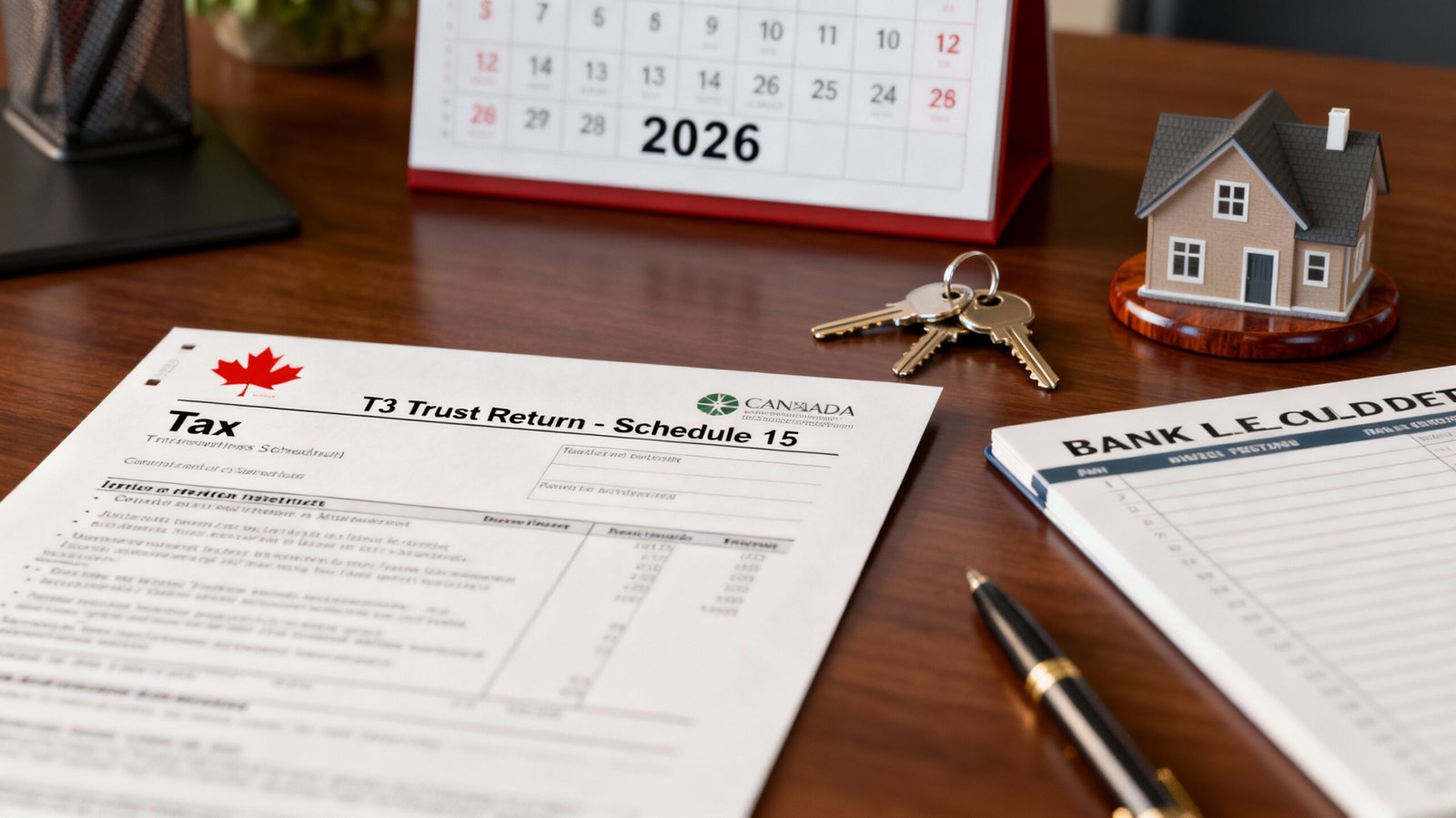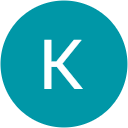Introduction: Understanding Your Tax Obligations in Canada
Filing your personal income taxes in Canada is a fundamental financial responsibility that affects your eligibility for government benefits, credits, and refunds. Whether you’re a salaried employee, self-employed individual, or earning investment income, understanding the Canadian tax system is essential to maximize your financial benefits and avoid penalties.
The Canada Revenue Agency (CRA) administers federal income taxes and collects provincial and territorial taxes on behalf of all provinces except Quebec. For any Canadian resident earning income, filing a tax return is not just recommended—it’s often mandatory. Even if you don’t owe taxes, filing ensures you receive all benefits and credits you’re entitled to, including the Canada Child Benefit (CCB), Goods and Services Tax/Harmonized Sales Tax (GST/HST) credit, and other income-tested benefits.
This comprehensive guide will walk you through every aspect of preparing and filing your personal tax return in Canada, from understanding key deadlines to claiming deductions, and from gathering essential documents to navigating the filing process.
Part 1: Key Tax Deadlines and Filing Requirements
Understanding Canadian Tax Year and Deadlines
The Canadian tax year runs from January 1 to December 31, with filing obligations due early the following year. It’s crucial to understand these deadlines to avoid penalties and interest charges.
General Tax Deadlines for 2025 (Filing for 2024 Tax Year):
- April 30, 2025 – Deadline for salaried employees, pensioners, and individuals with no business income to file their personal income tax returns.
- April 30, 2025 – Payment deadline for any taxes owing (if you miss this date, you’ll face a 5% penalty on unpaid amounts, plus 1% interest per month for up to 12 months).
- June 15, 2025 – Extended filing deadline for self-employed individuals and their spouses or common-law partners.
- Important note: Self-employed individuals must still pay any taxes owed by April 30, 2025, even though their filing deadline is June 15.
RRSP Contribution Deadline:
- March 1, 2025 – Last day to make RRSP contributions that are eligible for deduction on your 2024 tax return.
Who Must File a Tax Return?
You are required to file a tax return if any of the following applies:
- You have earned any income during the tax year from employment, self-employment, or other sources.
- You received government benefits or credits that must be recalculated annually.
- You have income that is subject to tax withholding requirements.
- The CRA asks you to file a return.
- You want to claim a tax credit or benefit you’re entitled to.
- You need to report income from rental properties, investments, or capital gains.
Even if you earned little or no income, filing a tax return may be beneficial if you’re eligible for refundable tax credits like the Canada Child Benefit or GST/HST credit.
Late Filing Penalties and Consequences
Failing to file your tax return by the deadline can result in serious consequences:
- Late filing penalty: 5% of any unpaid tax owing, plus 1% per month (up to 12 months) for subsequent months the return remains unfiled.
- Interest charges: 5% annually on unpaid taxes from the due date.
- Lost benefits: You may lose eligibility for means-tested benefits and credits.
- Delayed refunds: If you’re entitled to a refund, you won’t receive it until your return is filed and processed.
- CRA collection action: The CRA may escalate collection efforts, potentially affecting your credit rating and financial accounts.
Part 2: Gathering Essential Documents and Tax Slips
Before you begin preparing your tax return, you must gather all necessary supporting documents. Having organized documentation ensures accuracy, speeds up the filing process, and provides proof if the CRA requests to review your claims.
Understanding Tax Slips: T4, T4A, T5, and More
Tax slips are official documents issued by employers, financial institutions, and payers that report income paid to you during the tax year. You must include this information when filing your return.
T4 Slip (Statement of Remuneration Paid):
- Issued by employers to report employment income.
- Must be issued by employers to all employees earning more than $500 in the tax year.
- Deadline for employers to issue: February 28.
- Contains important boxes including:
- Box 14: Total employment income (wages, salaries, bonuses)
- Box 16: Canada Pension Plan (CPP) contributions
- Box 18: Employment Insurance (EI) premiums
- Box 22: Income tax deducted at source
- Box 40: Taxable employment benefits
- You’ll need to report Box 14 amount on Line 10100 of your tax return.
T4A Slip (Statement of Pension, Retirement, Annuity, and Other Income):
- Issued for income that isn’t regular employment income.
- Used to report: RRSP withdrawals, pension income, retiring allowances, annuities, scholarship or bursary income, and other special income.
- Must be retained for your records.
T5 Slip (Statement of Investment Income):
- Issued by banks, investment companies, and financial institutions.
- Reports investment income including interest, dividends, and capital gains.
- Contains boxes for interest, eligible dividends, and non-eligible dividends.
Other Important Tax Slips:
- T2 – Corporate income tax return for corporations.
- T2125 – Statement of Business or Professional Activities (for self-employed individuals).
- T2202A – Tuition and Education Amounts (for students claiming education credits).
- T776 – Statement of Real Estate Rentals (for rental property income).
- T777 – Statement of Employment Expenses (for specific employment deductions).
- T1198 – Statement of Fishing Income (if applicable).
Essential Documents to Gather
Employment and Income Documents:
- All T4 slips from employers.
- All T4A, T5, and other income slips.
- Records of self-employment income (invoices, sales records, deposits).
- Freelance or contract work invoices and receipts.
- Interest statements from banks and credit unions.
- Dividend statements from investments.
- Rental property income records.
- Pension statements.
- Income from casual or seasonal work.
Expense and Deduction Receipts (Keep for 6 years):
- RRSP contribution receipts.
- Medical and dental expense receipts.
- Tuition and educational institution receipts.
- Childcare expense invoices and contracts.
- Union dues records.
- Professional dues and memberships.
- Student loan interest documentation.
- Mortgage interest statements.
- Charitable donation receipts.
- Home office expense records (rent, utilities, internet).
- Work-from-home expense documentation.
- Vehicle expense records (fuel, maintenance, insurance, lease payments).
- Business supply and equipment receipts.
Self-Employment and Business Documents:
- Gross income records (sales, service revenue).
- Business expense receipts and invoices.
- Office supplies and equipment purchases.
- Utilities and rent allocated to home office.
- Vehicle mileage log (with beginning and ending mileage).
- Advertising and marketing expenses.
- Professional service fees (accounting, legal).
- Insurance payments (liability, business).
- Business license and registration fees.
- Bank statements for business accounts.
- Capital asset depreciation records.
Family and Dependent Documents:
- Childcare provider receipts or contracts.
- Children’s Social Insurance Numbers (for CCB eligibility).
- Spouse’s or common-law partner’s income information.
- Dependent’s net income documentation.
- Disability Tax Credit Certificate (T2201) if applicable.
- Medical practitioner documentation for caregiver amounts.
Tax Planning and Previous Year Documents:
- Last year’s Notice of Assessment (NOA) showing RRSP deduction limit.
- Previous year tax return.
- Adjusted Family Net Income (AFNI) details if applying for benefits.
- Carry-forward amounts (unused tuition credits, capital losses).
Part 3: Understanding Your Income and Complete Income Reporting
The CRA requires you to report all income from every source. Failing to report income is one of the most common and serious tax mistakes that can trigger audits, penalties, and interest charges.
Types of Income and Where to Report Them
Employment Income (Line 10100):
- Total wages, salaries, and bonuses from all employers.
- Taxable benefits provided by your employer (company vehicle, health coverage value).
- Stock option benefits.
- Gratuities and tips.
- Commissions.
- Report this amount from Box 14 of your T4 slip(s).
- If you have multiple employers, combine all T4 income.
Self-Employment and Business Income (Line 10400 or T2125):
- Gross revenue from your sole proprietorship or partnership.
- Income from freelance work, contracts, or gigs.
- Income from online businesses or e-commerce.
- Professional services income.
- Agricultural income.
- Fishing income.
- Required to file Form T2125 if self-employed.
- Report net business income after deducting allowable business expenses.
Investment Income:
- Interest Income (Line 12100): Interest from savings accounts, bonds, GICs, and other interest-bearing investments (fully taxable at your marginal rate).
- Canadian Dividend Income (Line 12000 or 12010):
- Eligible dividends from Canadian corporations (grossed up by 38%, benefiting from dividend tax credit).
- Non-eligible dividends (grossed up by 15%, lower tax credit benefit).
- More tax-efficient than interest income due to dividend tax credit.
- Foreign Investment Income (Line 12100 + foreign income):
- Taxed at full marginal rate without dividend tax credit.
- Must be reported in Canadian dollars using Bank of Canada exchange rate on receipt date.
- Dividends from US and international investments do not benefit from the dividend tax credit.
Rental Property Income (Form T776):
- Gross rental income from residential or commercial properties.
- Report net rental income after deducting eligible expenses (mortgage interest, property taxes, maintenance, utilities, insurance).
- Capital gains on property sale are 50% taxable.
- Cannot deduct capital cost allowance (depreciation) as this triggers recapture on sale.
Other Income Sources (Often Overlooked):
- Disability benefits (CPP-D, provincial disability support).
- Employment Insurance (EI) benefits.
- Workers’ compensation benefits.
- Child support received.
- Alimony received.
- Annuity payments.
- Pension income and Registered Retirement Income Fund (RRIF) withdrawals.
- Scholarship and bursary income.
- Income from the platform economy (ridesharing, accommodation sharing, peer-to-peer sales).
- Social media income or influencer earnings.
- Casual work, side gigs, or part-time employment.
- Proceeds from selling goods online.
- Rewards, cash-back, or gift cards with material value.
- Lottery winnings (generally not taxable, but investment returns on winnings are).
Capital Gains and Investment Income Special Rules
Capital Gains (50% Inclusion Rate):
- When you sell an investment or property for more than you paid, you realize a capital gain.
- Only 50% of the capital gain is included in your taxable income.
- Example: You buy stock for $1,000 and sell for $1,500 = $500 gain; only $250 is added to taxable income.
- This preferential treatment makes capital gains significantly more tax-efficient than dividends or interest.
- Capital losses can offset capital gains, reducing your tax bill.
- Unused capital losses can be carried back 3 years or forward indefinitely.
Dividend Gross-Up and Tax Credit System:
- Canadian dividends receive special treatment to avoid double taxation.
- Eligible dividends are “grossed up” by 38% before calculating tax.
- Example: $1,000 eligible dividend is treated as $1,380 for tax calculation purposes.
- Dividend tax credit is then applied to reduce actual tax owing.
- Result: effective tax rate on eligible dividends is significantly lower than interest income.
- Non-eligible dividends are grossed up only 15% with correspondingly lower credit.
- This system encourages Canadian investment in dividend-paying companies.
Part 4: Tax Deductions: Reducing Your Taxable Income
Tax deductions are amounts you can subtract from your total income to arrive at your net income. This reduces the amount of income subject to tax. Understanding available deductions is essential to minimizing your tax bill.
Employment Deductions
RRSP Contributions (Registered Retirement Savings Plan) – Line 20600:
- Most important deduction available to most Canadians.
- Maximum annual contribution limit is the lesser of:
- 18% of your previous year’s earned income
- Maximum dollar limit ($32,490 for 2025; increases annually)
- Reduces by any Pension Adjustment (PA) if you have an employer pension plan.
- Contributions can be made from March 1 of the previous year to 60 days after year-end.
- Example: Contribute by June 2, 2025 for deduction on 2024 tax return.
- 100% of RRSP contribution reduces taxable income dollar-for-dollar.
- Unused contribution room carries forward indefinitely.
- Critical tax planning tool for income-splitting and retirement savings.
- Contributions grow tax-free inside the RRSP until withdrawal.
- Withdrawals are fully taxable, ideally taken in lower-income years.
RRSP Deduction Limit Calculation Example:
- If you earned $80,000 in 2024: 18% × $80,000 = $14,400.
- If you had a Pension Adjustment of $2,000, your limit becomes $12,400.
- You can contribute and deduct up to $12,400 on your 2024 tax return.
- Any unused amount carries forward to future years.
Union Dues (Line 21200):
- Fully deductible for employees who are union members.
- Include dues paid to labor unions and professional associations.
- Keep receipts showing annual dues paid.
Professional Fees (Line 21300):
- Fees paid to professional associations for maintaining membership.
- Licensing fees required to practice your profession.
- Not deductible: personal development courses unrelated to your profession.
Childcare Expenses (Line 21400–21500):
- Deductible if you need care to enable you to work or study.
- Must be claimed by the lower-income spouse.
- Eligible caregivers: licensed daycare providers, nannies, summer camps.
- Limit: 2/3 of earned income (the lower-income spouse) or $8,000–$16,000 depending on child age.
- Keep receipts and provider information (name, address, Social Insurance Number).
Moving Expenses (Line 21900):
- Deductible if you moved more than 40 kilometers for employment.
- Eligible expenses: transportation, household items, temporary lodging, meals (50% only).
- Non-eligible: house-hunting trips, home sale costs, mortgage penalties.
- Deduction limited to income earned at new location.
Employment Expenses – Limited Availability:
- Generally, employees cannot deduct work expenses unless specifically authorized.
- Some commission-earning employees can deduct travel and equipment expenses.
- Required to complete Form T777 to claim employment expenses.
- Self-employed individuals have broader deduction rights.
Self-Employment Deductions (Form T2125)
Self-employed individuals enjoy significantly broader deduction rights than salaried employees, as you can deduct all expenses incurred to earn business income.
Common Self-Employment Deductions:
Office Supplies and Business Equipment:
- Pens, paper, office furniture, computer equipment.
- Capital items (computers, furniture) may be depreciated over time rather than fully deducted in purchase year.
- Keep all receipts and track capital equipment.
Advertising and Marketing:
- Website development and hosting.
- Business cards and flyers.
- Social media advertising.
- Google Ads and online marketing.
- Trade show booths and sponsorships.
- Professional photography for business.
Professional Services:
- Accounting and bookkeeping services.
- Legal consultation fees.
- Tax preparation fees.
- Business consulting.
Home Office Deduction:
- Calculate percentage of home used exclusively for business.
- Formula: square footage of office ÷ total square footage of home = percentage.
- If office is 20% of 2,000 sq ft home, deduct 20% of:
- Rent or mortgage interest (not principal)
- Utilities (hydro, heat, internet, phone)
- Property tax
- Home insurance
- Maintenance and repairs
- Property maintenance services
- Do not deduct: mortgage principal, property appreciation, capital improvements.
- Must have dedicated space used solely for business to qualify.
Vehicle and Transportation Expenses:
- Detailed mileage log required: record date, destination, business purpose, kilometers driven.
- Deductible: fuel, oil, maintenance, repairs, insurance, lease payments, registration.
- Not deductible: parking tickets, traffic violations, commute from home to first job.
- Calculate percentage: business km ÷ total km = deductible percentage.
- Alternative: use simplified vehicle rate (check CRA for current rates) instead of tracking all expenses.
- Keep receipts for all vehicle expenses.
Travel and Meals:
- Business travel: airline tickets, hotels, car rental, taxis.
- Meals while traveling for business: 50% of meal costs are deductible.
- Meals with clients/customers: 50% deductible if business purpose is clear.
- Keep receipts and document business purpose.
Interest and Bank Fees:
- Business loan interest is fully deductible (principal is not).
- Bank fees for business accounts.
- Interest on money borrowed to purchase business equipment.
- Not deductible: interest on personal loans or credit cards.
Insurance:
- Business liability insurance.
- Professional insurance (errors and omissions).
- Health insurance for proprietorship.
- Property insurance for business assets.
Business Licenses, Permits, and Dues:
- Professional licensing fees.
- Business registration and renewal fees.
- Professional association membership dues (related to business).
- Chamber of commerce dues.
Bad Debts:
- If you’ve already reported income from a customer who doesn’t pay.
- Must have made genuine attempts to collect.
- Document attempts to collect and reasons for write-off.
Contracted Services:
- Freelance work outsourced to other professionals.
- Graphic design, web development, copywriting services.
- Consulting services for specialized expertise.
Deductions from Net Income (Used to Calculate Taxable Income)
These deductions further reduce your income after accounting for all income and initial deductions.
Spousal/Common-Law Partner Support Payments (Line 22000):
- Payments made to former spouse or common-law partner.
- Must be ordered by court or agreed upon in writing.
- Paid after relationship breakdown.
- Regular ongoing payments or lump sum amounts.
- Not deductible: child support, voluntary support, support to current spouse.
Child Support Payments (Cannot be Deducted):
- Important distinction: child support is NOT tax-deductible.
- Only spousal support is deductible.
Capital Losses (Line 25600):
- Can offset capital gains dollar-for-dollar.
- Unused capital losses can be carried back 3 years or forward indefinitely.
- Must have actual realized capital losses (from selling investments or property at a loss).
- Keep detailed records of purchases and sales with dates and amounts.
Net Business Losses (Carryover):
- Current year business losses reduce other income.
- Excess losses can be carried back 3 years or forward indefinitely.
- Must have been in business with profit intention.
Part 5: Tax Credits: Direct Reductions in Tax Owing
Unlike deductions which reduce income, tax credits directly reduce the amount of tax you owe to the CRA. Tax credits are significantly more valuable than deductions because they apply at 100% of their value rather than at your marginal tax rate.
Basic Personal Amount (BPA) – Non-Refundable Federal Credit
2025 Federal BPA: $16,129
The Basic Personal Amount is the most fundamental tax credit available to all Canadians. It represents the amount of income you can earn before paying federal income tax.
- Everyone is entitled to claim the BPA.
- Indexed annually for inflation.
- Applied automatically in most cases.
- Reduces federal tax by approximately 14.5% of the BPA amount.
- Example: $16,129 × 14.5% = $2,339 in federal tax reduction.
- Combined with provincial BPA credit (varies by province), provides approximately $2,800–$3,500 total tax reduction.
Federal Tax Brackets and Marginal Rates (2025)
Understanding your marginal tax rate helps you calculate the actual tax savings from deductions and benefits.
Federal Tax Brackets (2025):
- 15% on the first $57,375 of taxable income.
- 20.5% on the portion between $57,375 and $114,750.
- 26% on the portion between $114,750 and $177,922.
- 29% on the portion between $177,922 and $235,675.
- 33% on income over $235,675.
Provincial Tax Rates:
Provinces and territories add their own tax on top of federal tax. Combined marginal rates vary by province:
- Lowest combined marginal rate: approximately 20–25% (for basic income in lower provinces).
- Highest combined marginal rate: approximately 53% (for highest earners in Ontario).
Refundable vs. Non-Refundable Tax Credits
Non-Refundable Tax Credits:
- Can only reduce your tax owing to zero.
- If the credit exceeds your tax, the excess is lost.
- Example: if you owe $1,000 in federal tax and have $2,000 in non-refundable credits, tax becomes zero, but you don’t receive the extra $1,000.
- Used first against your tax owing.
- Unused credits may sometimes be carried forward to future years.
Refundable Tax Credits:
- Can reduce your tax to below zero.
- The excess amount is paid to you as a refund.
- Example: if you owe $1,000 in federal tax and have $2,000 in refundable credits, you receive a $1,000 refund.
- Much more valuable than non-refundable credits.
- Important examples: Canada Child Benefit, GST/HST credit, Canada Workers Benefit, working income tax benefit.
Major Federal Tax Credits Available to Individuals
Canada Child Benefit (CCB) – Refundable Credit (Line 11500):
This is Canada’s primary family benefit program, providing monthly payments to help with child-raising costs.
- Eligibility:
- Must live with the child under 18 years of age.
- Must be the primary caregiver.
- Must be a Canadian resident for tax purposes.
- Either you or your spouse must be a Canadian citizen, permanent resident, protected person, or Indian Act registrant.
- Both spouses must file returns to receive benefits.
- Maximum Amounts (July 2025 – June 2026):
- Under 6 years: $7,997 per year ($666.41/month).
- 6–17 years: $6,748 per year ($562.33/month).
- Plus additional amount for eligible children with disabilities.
- Income Calculation:
- Benefits are based on Adjusted Family Net Income (AFNI).
- AFNI is your previous year’s net income (Line 23600 of tax return).
- Maximum benefits start reducing when AFNI exceeds $37,487.
- Benefits continue phasing down as income increases.
- Application:
- Automatically applied when registering a child’s birth.
- Can apply retroactively using Form RC66.
- Payments made monthly by CRA.
- Recalculated annually based on current year’s tax return.
GST/HST Credit – Refundable Credit (Line 12300):
A quarterly refundable credit provided to low- and middle-income Canadians to offset the impact of sales tax.
- Eligibility:
- Canadian resident for tax purposes.
- 19 years or older.
- File a tax return.
- Maximum Payment (2025):
- Varies by province and family situation.
- Single individuals: up to approximately $2,000–$2,500 annually.
- Families: up to approximately $4,000–$5,000 annually.
- Exact amount depends on income, province, and family composition.
- Income Thresholds:
- Payments reduce gradually as net income increases.
- Maximum payment if net income is below certain threshold (varies by province).
- No payment if net income exceeds approximately $62,000–$65,000 (depending on family status).
- Payment Schedule:
- Paid quarterly in January, April, July, and October.
Canada Workers Benefit (CWB) – Refundable Credit (Line 45300):
Provides tax relief and financial support for working low-income individuals and families.
- Eligibility (2024 Tax Year):
- Age 19 or older (or any age with spouse/common-law partner or eligible dependent).
- Canadian resident for entire tax year.
- Not a full-time student for more than 13 weeks (unless have dependent).
- Not incarcerated for 90+ days during year.
- Minimum net income of $3,000.
- Maximum net income: $65,577 (single) / $65,595 (family) – varies by province.
- Maximum Benefits (2024):
- Single individuals: up to $1,590 (gradually reduced above $26,149 income).
- Eligible families: up to $2,739 (gradually reduced above $29,833 income).
- Disability supplement: additional amount if eligible for disability tax credit.
- Unique Feature:
- Advanced CWB payments available – receive part of benefit quarterly rather than waiting for tax refund.
- Helps with cash flow throughout year.
Tuition and Education Credits (Line 32000):
- Tuition amounts paid to eligible post-secondary institutions (colleges, universities).
- Tax credit of 15% federal (plus provincial credit).
- Maximum annual federal credit: approximately $2,000–$3,000 depending on tuition paid.
- Unused credits can be carried forward indefinitely – valuable for students with low income.
- Must receive T2202A form from educational institution.
- Can be transferred to spouse or parent if not fully used by student.
- Eligible tuition: fees for enrollment in courses, but not parking or meal plans.
Student Loan Interest Credit (Line 31900):
- Interest paid on government student loans (federal or provincial).
- 15% federal credit on interest paid (plus provincial credit).
- Can only claim interest you actually paid, not the loan itself.
- Maximum annual federal credit: approximately $290.
- Unused interest can be carried forward 5 years.
- Must receive T4A(L) form showing interest paid.
- Note: Private bank loans do not qualify; only government student loans.
Medical Expense Credit (Line 33099 and 33199):
- For medical and dental expenses exceeding threshold.
- Must exceed the lesser of:
- 3% of your net income, OR
- $2,759 (2024 limit).
- Examples of eligible medical expenses:
- Doctor and dentist fees
- Prescription medications
- Eyeglasses and contact lenses
- Hearing aids
- Mobility aids and adaptive equipment
- Psychiatric and psychological counseling
- Physical therapy and physiotherapy
- Laboratory and diagnostic services
- Non-eligible: vitamins not prescribed, cosmetic surgery, massage therapy.
- Can claim for yourself, spouse, and dependents.
- 15% federal credit plus provincial credit.
- Example: If total medical expenses are $3,500 and net income is $50,000:
- 3% of $50,000 = $1,500 threshold.
- Eligible amount = $3,500 – $1,500 = $2,000.
- Federal credit = $2,000 × 15% = $300.
Disability Tax Credit (DTC) (Line 31800):
- For individuals with severe and prolonged mental or physical disability.
- Must obtain approval using Form T2201 (Disability Tax Credit Certificate).
- Requires certification from medical practitioner.
- Maximum non-refundable credit: approximately $8,662 federal (plus provincial).
- Can be claimed by individual or designated to spouse/dependent.
Canada Caregiver Amount (Various Lines):
Available for those providing care to infirm dependents:
- For Infirm Spouse/Common-Law Partner (Line 30300):
- Caregiver amount of $2,616 (2024) if spouse is infirm.
- Amount is reduced by spouse’s net income.
- Full amount available if spouse’s income is under $8,397.
- For Eligible Dependent (Line 30400):
- Can claim for dependent relative with whom you live.
- Caregiver amount available if dependent is infirm.
- Must be only one claim per household for this amount.
- Enhanced Canada Caregiver Amount (Line 30425):
- Additional $8,375 (2024) if you’re providing care for infirm spouse or adult dependent.
- Reduced by dependent’s income above $17,085.
- Requires medical documentation of infirmity.
- For Infirm Dependents Under 18 (Line 30500):
- Special caregiver amount for infirm children.
- Amount of $2,273 (2024) non-reduced by child’s income.
Pension and Retirement Income Credits (Line 31600):
- 15% federal credit on eligible pension income.
- Maximum annual federal credit: approximately $290.
- Eligible income: CPP benefits, RRIF withdrawals, pension payments.
- Non-eligible: RRSP withdrawals (fully taxable), benefits from pension plans already deducted from employment income.
- Automatic for those over 65; available to others receiving CPP or pension income.
Age Credit (Line 30300 for those age 65+):
- Additional federal credit: $7,582 (2024) for those 65 or older.
- Approximately $1,137 federal tax reduction.
- Reduced by net income above $44,901.
- Non-refundable credit.
Charitable Donations Credit (Line 34900):
- 15% federal credit on first $200 of donations.
- 29–33% federal credit on donations above $200 (depending on income level).
- Plus provincial credits vary by province.
- Total tax credit can range from 40–50% of donation amount.
- Examples of qualified donations:
- Money to registered Canadian charities.
- Publicly traded shares (no capital gains tax).
- Ecologically sensitive land.
- Non-qualified: donations to foreign charities (with exceptions), donations where you receive a benefit.
- Carry-forward: unused donations can be carried forward 5 years.
- Keep donation receipts (don’t submit with return, but keep for records).
- Example: $500 donation could generate $150–$250 tax credit depending on bracket and province.
Employment Insurance Premium and CPP Contribution Credits (Line 30700):
- 15% federal credit on EI premiums paid (automatically calculated).
- 15% federal credit on CPP base contributions paid (automatically calculated).
- Additional CPP contributions eligible for credit in 2024 onwards.
- Approximately $200–$400 in combined credits for typical employees.
Home Buyers’ Plan (HBP) (Not a credit but RRSP benefit):
- While not technically a tax credit, allows first-time homebuyers to withdraw up to $35,000 from RRSP tax-free.
- Funds must be used to purchase primary residence within 4 years.
- Must repay to RRSP over 15-year period.
- Reduces current income tax by amount withdrawn.
- Claim through appropriate form when filing tax return.
Part 6: Understanding Provincial and Territorial Taxes
In addition to federal income tax, all Canadians must pay provincial or territorial income tax. Each province and territory sets its own tax rates and credits, resulting in different total tax burdens depending on where you reside.
Provincial Tax Rates and Basic Personal Amounts
Tax Rates Vary Significantly by Province:
The combined federal and provincial marginal tax rates create the effective tax rate you pay on income. For example:
- Alberta: Generally lowest combined rates; no provincial sales tax.
- Ontario: Mid-range rates; HST at 13%.
- British Columbia: Mid-range rates; combines GST and PST.
- Quebec: Unique system; collects own taxes through Revenu Québec.
- Maritime Provinces: Higher combined rates; HST applied.
Basic Personal Amounts by Province (2025):
Each province sets its own BPA, which determines the provincial tax credit. For example:
- Ontario: $12,747 (2025)
- British Columbia: $12,932 (2025)
- Alberta: $22,323 (2025) – significantly higher than most provinces
- Quebec: Varies (administered by Revenu Québec)
Important Note: Combined federal and provincial basic personal amounts result in approximately $28,000–$30,000 in total deductions from income, meaning most Canadians earning under this amount pay no income tax.
Provincial Credits and Special Programs
Many provinces offer additional credits not available federally:
- Provincial spousal credits.
- Provincial disability credits.
- Provincial caregiver amounts.
- Provincial education credits.
- Provincial surtaxes on high incomes.
- Provincial tax reduction programs for low-income earners.
- Provincial first-time homebuyer credits (some provinces).
Quebec Special Rules
Quebec residents file both federal and provincial returns but through different systems:
- Federal return filed with CRA using NETFILE.
- Provincial return filed with Revenu Québec (Quebec’s equivalent to CRA).
- Revenu Québec opens for filing earlier than CRA (typically mid-January).
- Revenu Québec deadline: usually March 1.
- Different tax forms (TP-1 instead of provincial Form 428).
- Some credits differ from other provinces.
Declaring Provincial Residency
Critical: You must indicate your province or territory of residence on your tax return. CRA uses this to:
- Apply correct provincial tax rates.
- Calculate provincial tax credits.
- Determine benefit eligibility.
- Send correspondence to correct provincial tax authority.
Provincial Residency Rules:
- File in the province/territory where you resided on December 31 of the tax year.
- If you moved during the year, file in the province where you ended the year.
- You may be deemed a resident if you have significant ties (home, family, employment).
- Newcomers must establish residency status.
- Non-residents file only federal return using special forms.
Part 7: Step-by-Step Tax Return Filing Instructions
Step 1: Obtain Required Forms
The primary form for personal income tax filing in Canada is the T1 General Income Tax and Benefit Return, along with various schedules depending on your situation.
Where to Get Forms:
- Online at CRA website (search “tax forms”).
- Download or order paper forms during tax season.
- Tax software: most NETFILE-certified software includes all necessary forms.
- By phone: call CRA at 1-800-959-5525.
Forms You’ll Need:
- T1 General (main form) – required for all tax filers.
- Schedule 1 (Federal Tax) – calculates federal tax owing and non-refundable credits.
- Form 428 or provincial form – calculates provincial tax and credits.
- Other schedules depending on your situation:
- Schedule 9: donations and gifts
- Form T2125: self-employment income (if applicable)
- Form T776: rental income (if applicable)
- Schedules for capital gains (if applicable)
- Schedules for carrying forward credits
Step 2: Complete Section 1 – Identification Information
Accurately complete all identification information on Page 1 of the T1 form.
Required Personal Information:
- Full legal name.
- Social Insurance Number (SIN).
- Date of birth (MM/DD/YYYY).
- Current mailing address.
- Provincial/territorial residence on December 31.
- Phone number.
- Email address.
- Language of correspondence.
Relationship Status:
- Mark “yes” if married or common-law partnership on December 31.
- Provide spouse’s name and SIN if applicable.
- Important for spousal credits and filing status.
- Common-law defined as living together continuously for 12+ months.
Business Information (if self-employed):
- Business name.
- Business address.
- Business activity type.
Important Elections and Declarations:
- Elections Canada authorization.
- Exempt income declaration.
- Foreign property declaration (if applicable).
- Other specific elections.
Step 3: Complete Section 2 – Total Income (Page 2)
Report all income from every source for the calendar year. This is your gross income before deductions.
- Employment Income (Line 10100)
- Other Employment Income (Line 10400)
- Pension and Retirement Income (Line 11500)
- Investment Income (Line 12000, 12010, 12100)
- Rental Income (Line 13600 via T776)
- Self-Employment Income (via T2125)
- Other Income (Line 13000+)
Sum all income amounts from all lines to get your total income.
Step 4: Complete Section 3 – Calculate Net Income (Page 2–3)
Net income is calculated by subtracting eligible deductions from total income.
Key Deductions:
- RRSP contributions (Line 20600).
- Spousal/partner support (Line 22000).
- Moving expenses (Line 21900).
- Childcare expenses (Lines 21400–21500).
- Union dues (Line 21200).
- Professional membership fees (Line 21300).
- Capital losses (Line 25600).
After deductions, you get Net Income – used for benefits, credits, and RRSP limits.
Step 5: Complete Section 4 – Calculate Taxable Income (Page 3)
Start with net income and apply further reductions (e.g. prior year capital losses on Line 25700). The result is Taxable Income – the amount used to calculate your federal and provincial tax.
Step 6: Complete Schedule 1 – Calculate Federal Tax and Credits
- Apply federal tax brackets to taxable income.
- Claim all non-refundable credits (BPA, spousal, age, disability, medical, tuition, donations, CPP/EI).
- Arrive at federal tax payable.
Step 7: Complete Provincial/Territorial Form (428 or Equivalent)
- Use your province of residence on December 31.
- Apply provincial BPA and provincial credits.
- Calculate provincial tax owing.
Step 8: Claim Refundable Credits
After federal and provincial tax is calculated, claim refundable credits such as:
- GST/HST Credit.
- Canada Child Benefit.
- Canada Workers Benefit.
- Any refundable provincial credits.
Step 9: Calculate Your Refund or Balance Owing
- If total credits and withholdings > tax owing → refund.
- If tax owing > credits and withholdings → balance owing (due April 30).
Step 10: Direct Deposit Setup and Signatures
- Add banking details for faster refunds.
- Sign and date the return.
- Keep a copy for your records.
Part 8: Filing Your Tax Return
Option 1: NETFILE – Electronic Filing (Fastest and Recommended)
NETFILE is CRA’s electronic filing system.
Requirements:
- NETFILE-certified software (TurboTax, UFile, CloudTax, Wealthsimple Tax, StudioTax, etc.).
- SIN or TTN.
- Complete return in software, then transmit.
Advantages:
- Faster refunds (as few as 8 business days).
- Instant confirmation number.
- No mailing required.
Restrictions:
- Cannot file for deceased persons, bankrupt persons, or certain special elections through NETFILE.
- Quebec provincial return is separate.
Option 2: Paper Filing
- Download/print CRA forms.
- Complete by hand or print from software.
- Mail to your CRA tax centre.
- Processing: about 8 weeks.
Option 3: File Through a Tax Professional
A tax professional can:
- Optimize deductions and credits.
- E-file for fastest processing.
- Represent you with CRA.
- Handle multi-year or complex returns.
Part 9: After Filing – Notice of Assessment and Important Follow-Up
Receiving Your Notice of Assessment (NOA)
After CRA processes your return, you receive a Notice of Assessment (NOA). It shows:
- Refund or balance owing.
- Income and deductions as assessed.
- Your RRSP contribution limit for the next year.
- Carry-forward amounts (tuition, losses, donations).
- Any adjustments made by CRA.
Timelines:
- E-file: about 2 weeks.
- Paper: about 8 weeks.
You can view the NOA in your CRA My Account.
CRA Account Access and Personal Information Management
CRA’s My Account lets you:
- View NOAs, T-slips, and benefit payments.
- Update address, banking, and marital status.
- View RRSP and TFSA limits.
- See instalment reminders.
Keep information current to avoid missed benefits and delayed mail.
Responding to CRA Correspondence
If CRA asks for documents:
- Note the deadline.
- Send copies (not originals).
- Organize by line item.
- Keep proof of sending.
Objecting to CRA Assessment
If you disagree:
- You have 90 days from the date on the NOA.
- File a Notice of Objection (Form T400A).
- Explain what you’re disputing and include documents.
- CRA appeals will review it.
Part 10: Common Tax Mistakes to Avoid
- Not reporting all income – CRA gets your slips directly; mismatches trigger reassessments.
- Claiming ineligible expenses – personal or commuting costs are common audit triggers.
- Not keeping receipts for 6 years – CRA can deny deductions without proof.
- Missing tax deadlines – 5% late-filing penalty plus 1% per month.
- Incorrect RRSP room calculation – over-contributions can attract 1%/month penalty.
- Forgetting spousal RRSP contributions – missed income-splitting opportunity.
- Missing refundable credits – CCB, GST/HST, CWB often missed by low-income earners.
- Deducting child support – it’s not deductible; only spousal support is.
- Not updating personal info with CRA – leads to missed benefits and delayed mail.
- Not planning for self-employment tax – set aside funds and track expenses all year.
Part 11: Why Professional Tax Preparation Is Your Best Investment
Understanding Tax Complexity and Risk
Canada’s tax system is complex. Errors can lead to:
- Overpaying tax.
- Missed deductions and credits.
- Penalties and interest.
- CRA reviews and audits.
What Professional Tax Preparers Do That You Might Miss
- Optimize RRSP contributions.
- Identify every eligible credit.
- Properly report rental, business, and investment income.
- Help with residency and cross-border issues.
- Defend you if CRA reviews your return.
BOMCAS Canada: Your Premier Tax Preparation Solution
BOMCAS Canada is a leading accounting and tax services firm dedicated to helping Canadian individuals and businesses optimize their tax position while ensuring full compliance with CRA requirements.
Our Comprehensive Services Include:
- Personal income tax return preparation and filing (federal and all provinces/territories).
- Handling complex income (self-employment, rental, investments).
- NETFILE e-filing for fastest refunds.
- Small business and self-employment tax services (T2125).
- Corporate tax (T2) and year-end planning.
- GST/HST filing and payroll support.
- Multi-year catch-up filing and amended returns.
- CRA audit support and representation.
- Immigration/residency tax issues (arrival, departure, deemed disposition).
- Ongoing bookkeeping so your taxes are always ready.
How BOMCAS Canada Protects Your Financial Interest:
- Experienced professionals.
- Up-to-date with CRA rules.
- Systematic review to prevent errors.
- Documentation guidance to make you “audit-ready.”
- Strategic tax planning for future years.
- Peace of mind.
Cost–Benefit:
- DIY software: cheaper upfront but often misses $1,000–$5,000 in tax savings.
- Professional prep: typically $300–$800, but often produces $2,000–$3,000+ in net benefit when you include tax saved, time saved, and audit risk reduced.
Getting Started with BOMCAS Canada
What you’ll need to provide:
- Personal info (SIN, address, marital status).
- All income slips (T4, T5, T4A, pension, rental).
- Expense receipts (medical, childcare, donations).
- Prior year NOA.
- Details of life changes (marriage, kids, move, business).
Our process:
- Initial consultation.
- Document collection.
- Professional preparation with CRA-approved software.
- Review with you.
- E-file to CRA.
- Follow-up and planning for next year.
BOMCAS Canada is your best option to have your taxes done correctly despite everything.
Contact BOMCAS Canada today for a consultation so you can focus on your business, your family, and your financial security while we take care of the tax side.
Conclusion
Filing your personal income taxes in Canada requires:
- Accurate income reporting.
- Claiming all deductions and credits.
- Keeping documentation for 6 years.
- Filing on time.
- Staying informed about annual changes.
This guide gives you the full framework. But because tax rules change, income situations differ, and CRA can request reviews at any time, working with a professional firm like BOMCAS Canada ensures:
- Your return is correct.
- You don’t leave money on the table.
- You stay compliant with CRA.
- You have support if CRA asks questions.
Bottom line: file every year, report all income, claim everything you’re entitled to, and get professional help when things get complex.










 View Our Location
View Our Location





 181 Meadowview Bay, Sherwood Park, AB T8H 1P7, Canada (Online Clients Only)
181 Meadowview Bay, Sherwood Park, AB T8H 1P7, Canada (Online Clients Only)